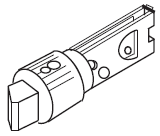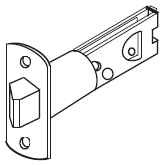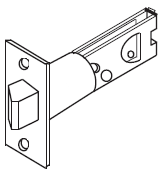Types of Door Latches
Drive-In Latch
The drive in latch is definitely the least difficult to install. You do not have to chisel anything at all from your door, just dive the latch in to the hole (ensure that the latch is positioned in the right direction) and you can now mount the door knob or lever. In the event your door has already been prepared for a bigger faceplate, these will not work. How can you tell? In the event the side of your door is even with only a 1 inch hole for your latch, the drive in will do the job. In the event the 1 inch hole contains a rectangle-shaped indent around it where by some of your door material has been taken out, you are going to require one of the following different types of latches.

Rounded Corner Faceplate Door Latch
Rounded corner faceplate latches are quite popular. Door shops will most likely utilize a router jig to clear out the material throughout the crossbore (latch opening). Since they are utilizing router bit, the 4 corners are curved. Achieving this requires more time for the door shop, however in looks better within the door over a drive in latch. The bigger faceplate also helps to keep the latch steadily in position as it is held on by installing two fasteners, as opposed to the drive in latch can change in the crossbore if it's not tight enough.

Square Corner Faceplate Latches
Square corner faceplate latches are common on many high end door hardware manufacturers. These are typically mounted that old school way utilizing a good razor-sharp chisel and hammer. If performed correctly, a good square corner faceplate latch chiseled meticulously as well as at the optimal depth seems to be the most beneficial. In case you have rounded corner faceplates it is possible to exchange these with square corner by chiseling from the 4 corners, however they generally seem the best when you are starting from scratch, as opposed to retro-fitting.


